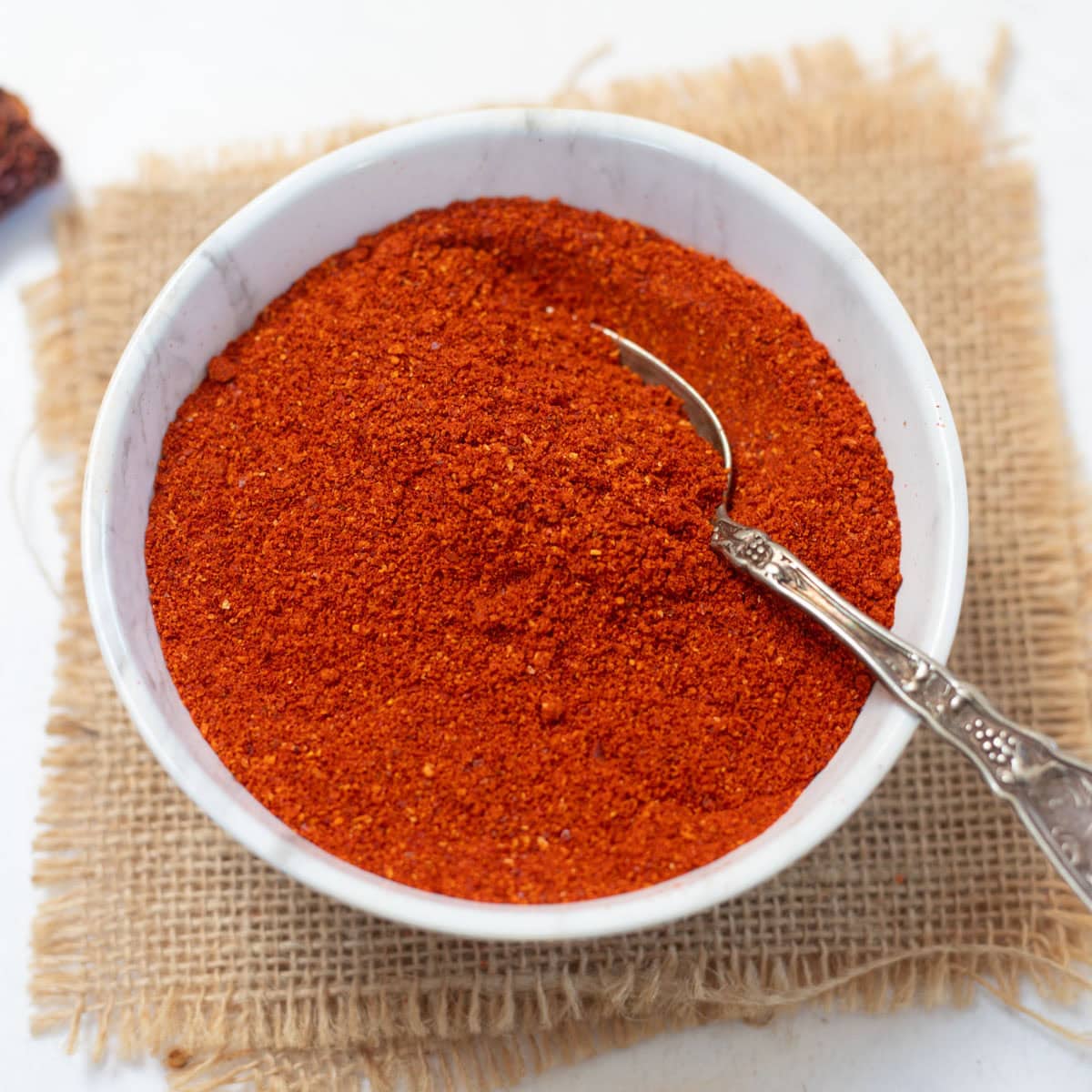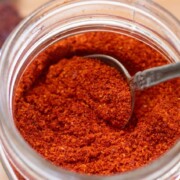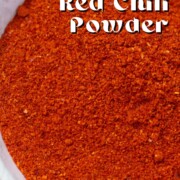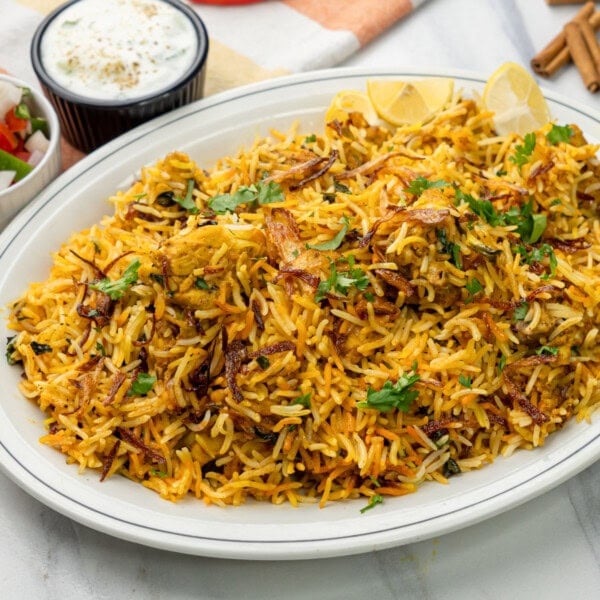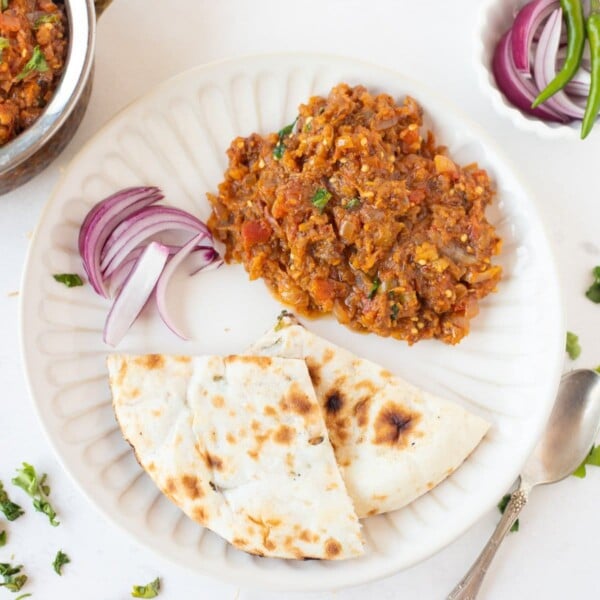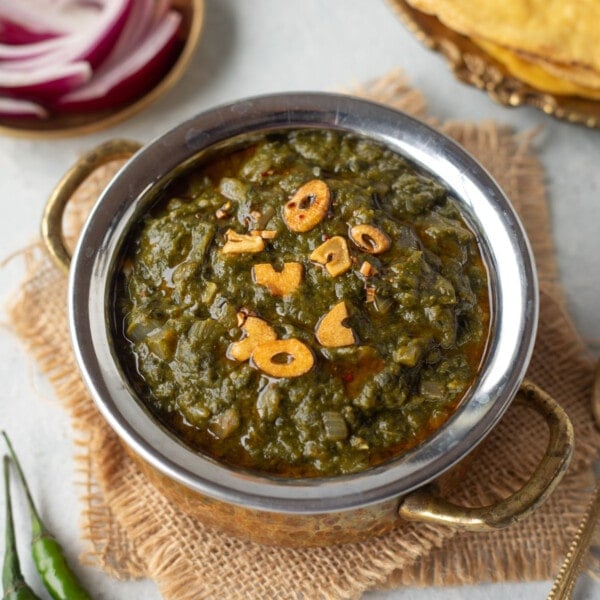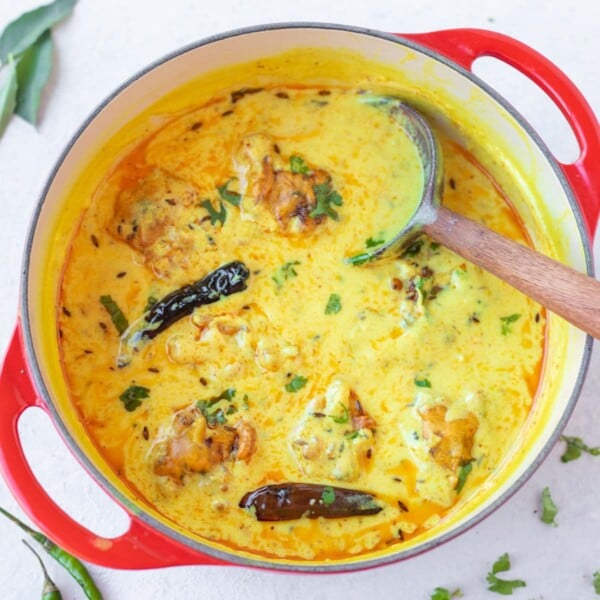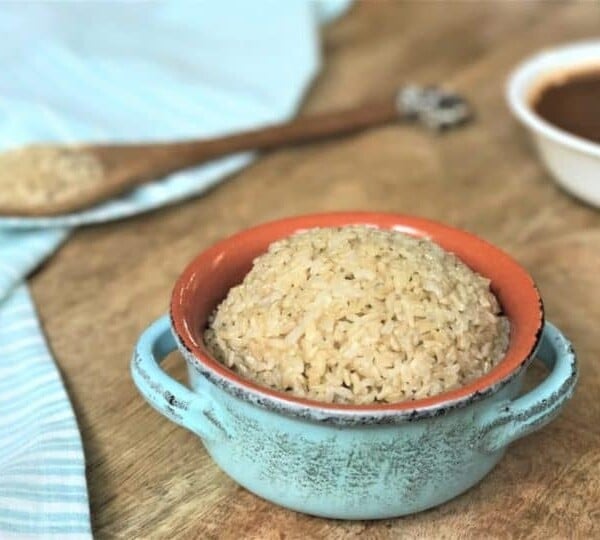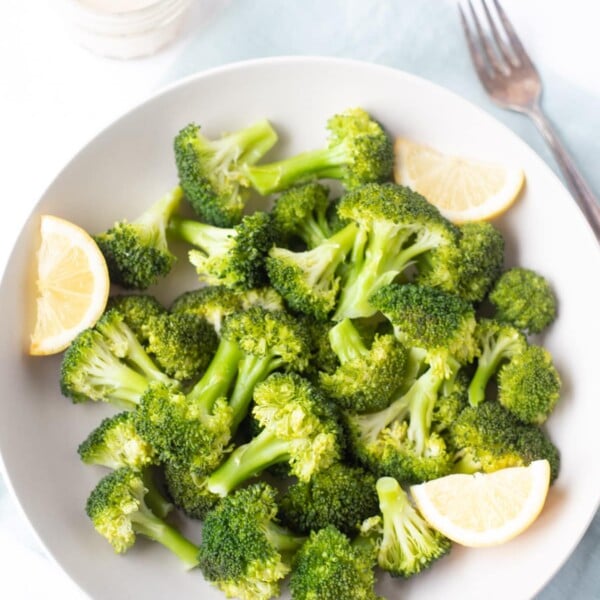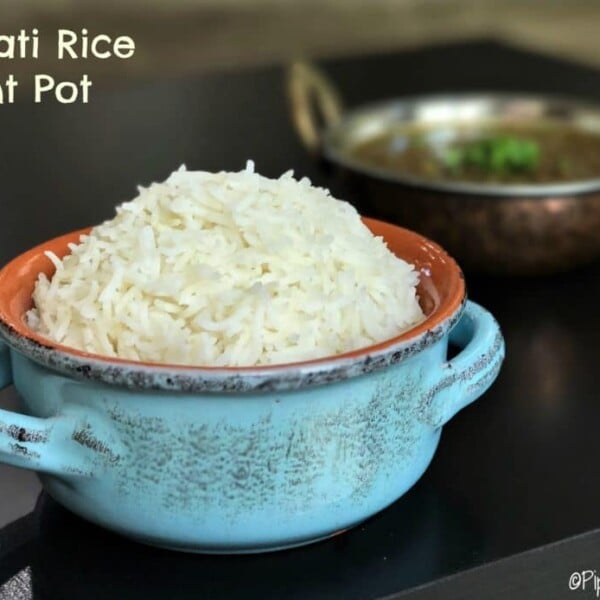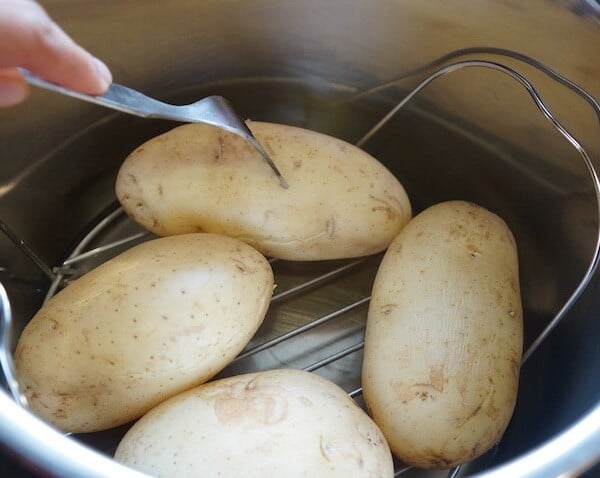Indian red chili powder is a vibrant spice that adds a fiery kick and beautiful red hue to many Indian dishes. But did you know there’s more than one kind? Learn about the varieties of Indian red chili powder, how to make it at home, and how to use it in cooking.
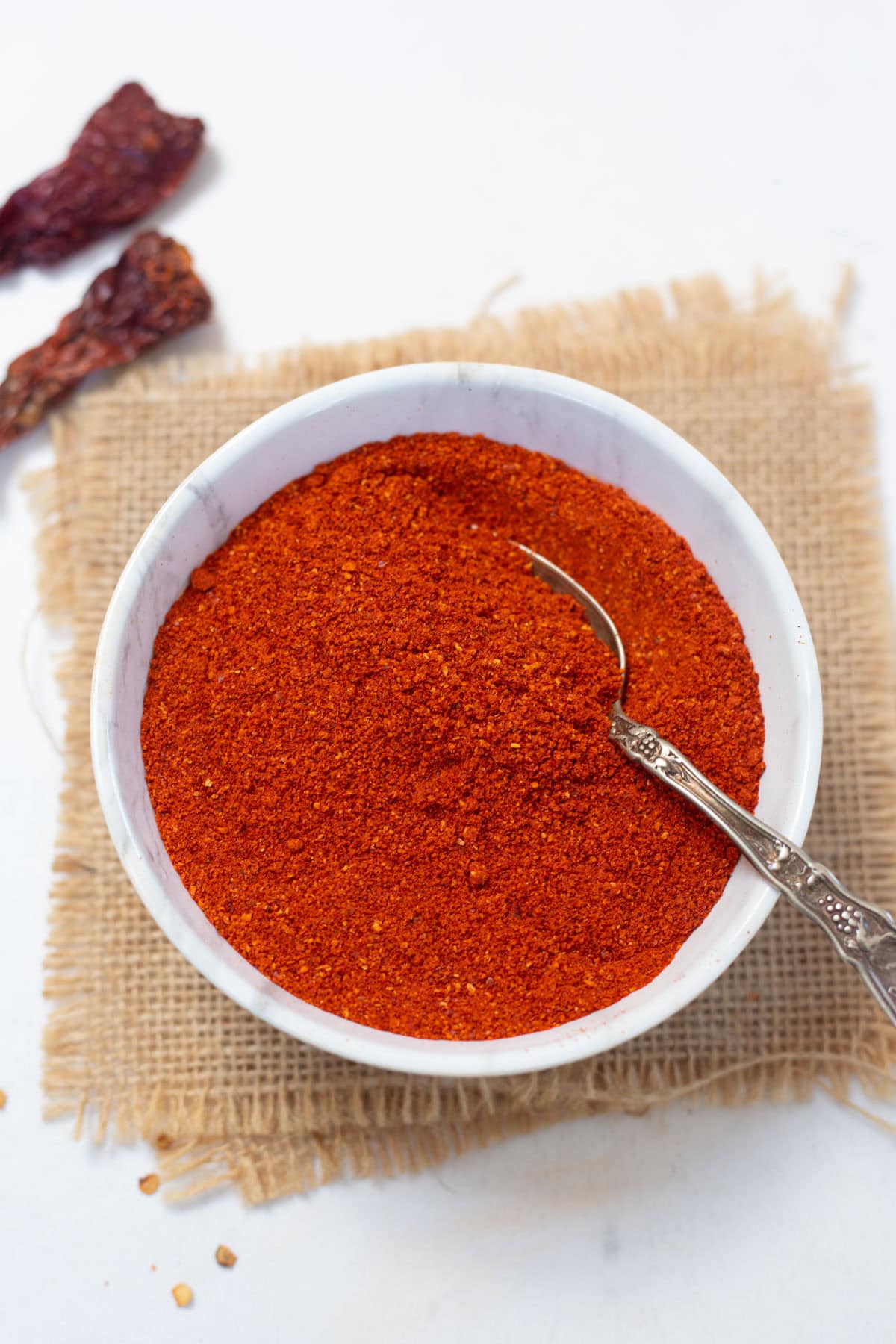
India is known for producing many varieties of red chili peppers, which are common in hot countries. But guess what? Chilies didn’t start in India! They actually came here with the Portuguese around 500 years ago. Since then, they’ve grown well here, and we’ve developed many kinds of red chilies.
Red Chili powder is an essential spice used in Indian cooking, and it is always part of the masala dabba. I use regular red chili powder, also called lal mirch (the Hindi word “lal” means red, and “mirch” means chili pepper), and Kashmiri red chili powder in my cooking.
You can easily find red chili powder in stores. However, it can contain additives such as artificial colors and preservatives. Hence, at home, I prefer to make ground spices and spice blends such as coriander powder, cumin powder, red chili powder, and garam masala. I have always seen my mom make all these ground spices at home, so I have followed suit.
Ground red chili powder is easy to make at home, and it is fresh, flavorful, and aromatic. I hope you give it a try and see the difference for yourself!
Table of Contents
Watch How to Make Red Chili Powder
Popular Types of Indian Red Chilies
Indian red chilies come in different shapes, sizes, and levels of spiciness. Whether it’s the mild Kashmiri red chili or Byadki or Guntur, each type adds a special flavor to our favorite Indian dishes.
Kashmiri Red Chili:
Kashmiri red chili is famous for its bright red color and mild spiciness. It’s often used to give dishes a nice color without making them too spicy. You might find it in dishes like chutneys or tandoori chicken.
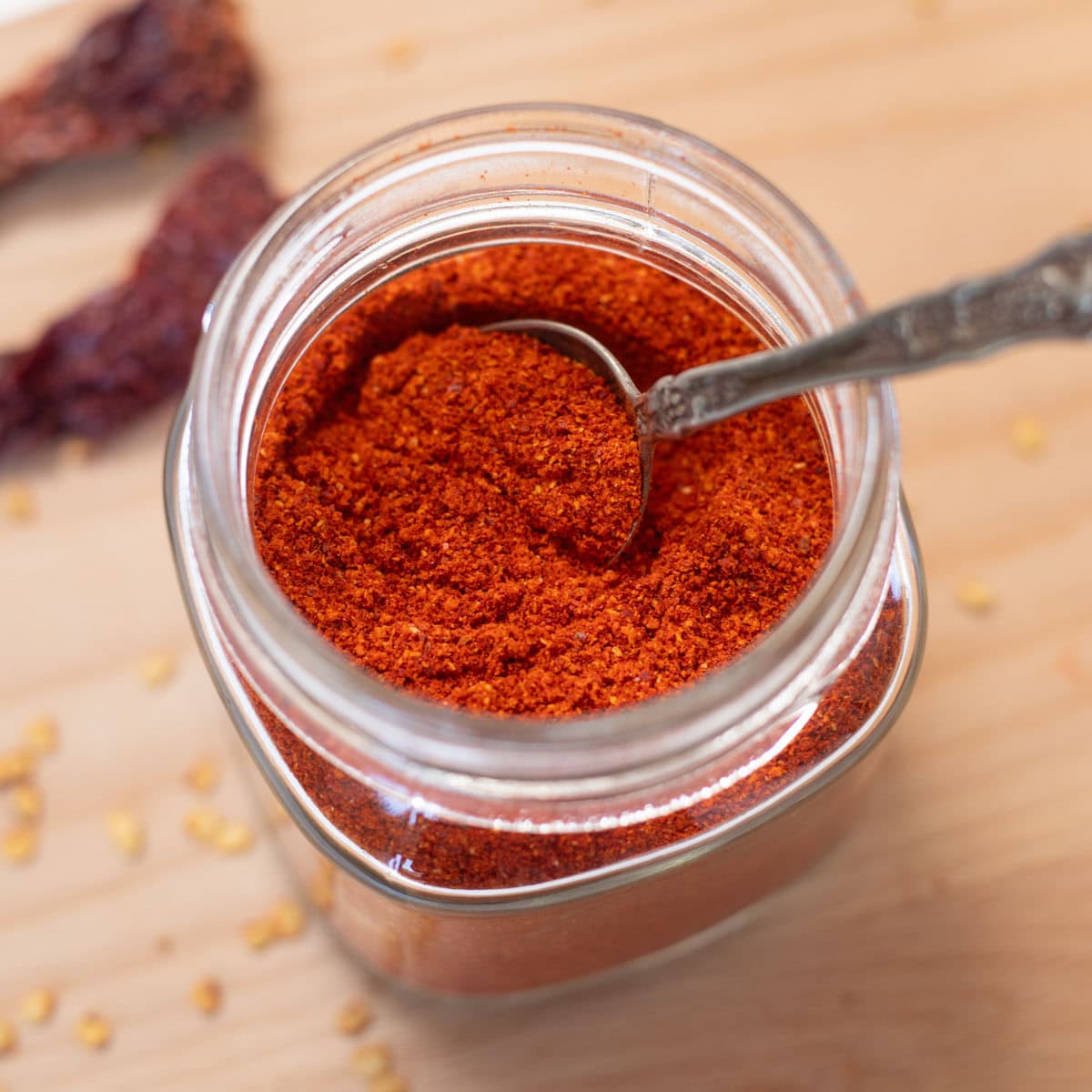
Byadgi Chili:
Byadgi chilies come from Karnataka in South India. They’re not too spicy and have a deep red color. People use them to add flavor and color to South Indian dishes like sambar.
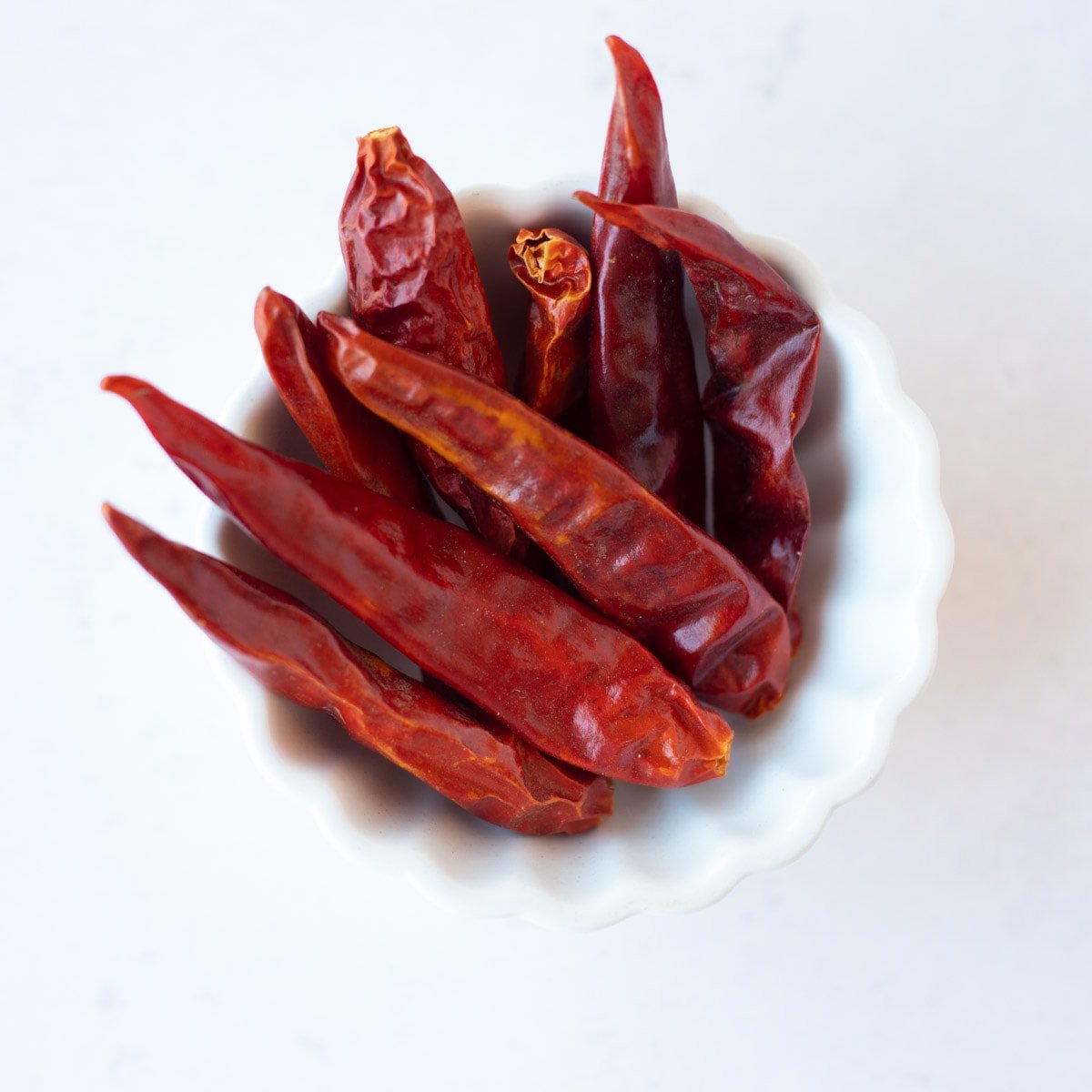
Guntur Chili:
Guntur chilies are really spicy and have a strong flavor. They’re from Andhra Pradesh and are used in curries and pickles. Even though they’re super hot, they are popular and well-loved.
Sannam Chili:
Sannam chilies have a medium level of spiciness and are used in many Indian dishes, both dry and with gravy. They add a nice kick to the food without being too overwhelming.
Naga Jolokia (Ghost Pepper):
Naga Jolokia is one of the hottest chilies in the world. It comes from Northeast India. Because it’s extremely spicy, people use it very carefully.
Bhoot Jolokia (Ghost Pepper):
Bhoot Jolokia is another super spicy chili from Northeast India. It is used in small amounts to add a lot of heat to dishes and sauces. Just a little bit can make a big difference in the spiciness of a dish.
Cayenne vs Chili powder vs Kashmiri chili powder Vs Paprika
The difference between the three is due to the type of chili used, their heat, and color.
Kashmiri Chili powder is the mildest and has a vibrant red color. It is used when you want to get a red color to a dish without adding much heat.
Regular Indian Chili powder typically has more heat than the mild Kashmiri version. It is made from ground-dried chili peppers (most commonly with Byadki or Guntur chili peppers).
Cayenne is made from dried cayenne peppers and has a sharp, fiery flavor. Cayenne is typically about the same amount of heat as Indian Chili Powder.
Paprika is the mildest of all, but has a different flavor profile as it is made from sweet peppers.
| Type | Scoville Units |
| Kashmiri Red Chili Powder | 1,000-2,000 |
| Indian Red Chili Powder | 40,000-65,000 |
| Cayenne | 30,000-50,000 |
| Paprika | 500-1,000 |
Why Make Red Chili Powder at Home?
Making red chili powder at home has several benefits that can enhance the final taste of the dish. Here are some reasons why you should consider making it yourself:
- Freshness: When you make it yourself, you know exactly how fresh your chili powder is. It’s like cooking with fresh ingredients versus canned ones.
- No Additives: You can avoid extra ingredients sometimes added to store-bought chili powder, keeping it pure and natural.
- Your Spice, Your Way: You can control how spicy you want it to be by choosing different types of chilies and adjusting the amount you use.
- Saves Money: It can be cheaper in the long run, especially if you buy chilies in bulk or grow them yourself.
How to Make Indian Red Chili Powder?
- Get the chilies ready: Take the stems off the red chilies.
- Roast the chilies: Put them in a pan and cook them over medium heat until they get crispy. Stir them often. You’ll know they’re ready when they’re crispy and smell good. If you break one, it should easily break, not bend.
Pro tip: You can also sun-dry the red chilies instead of roasting.
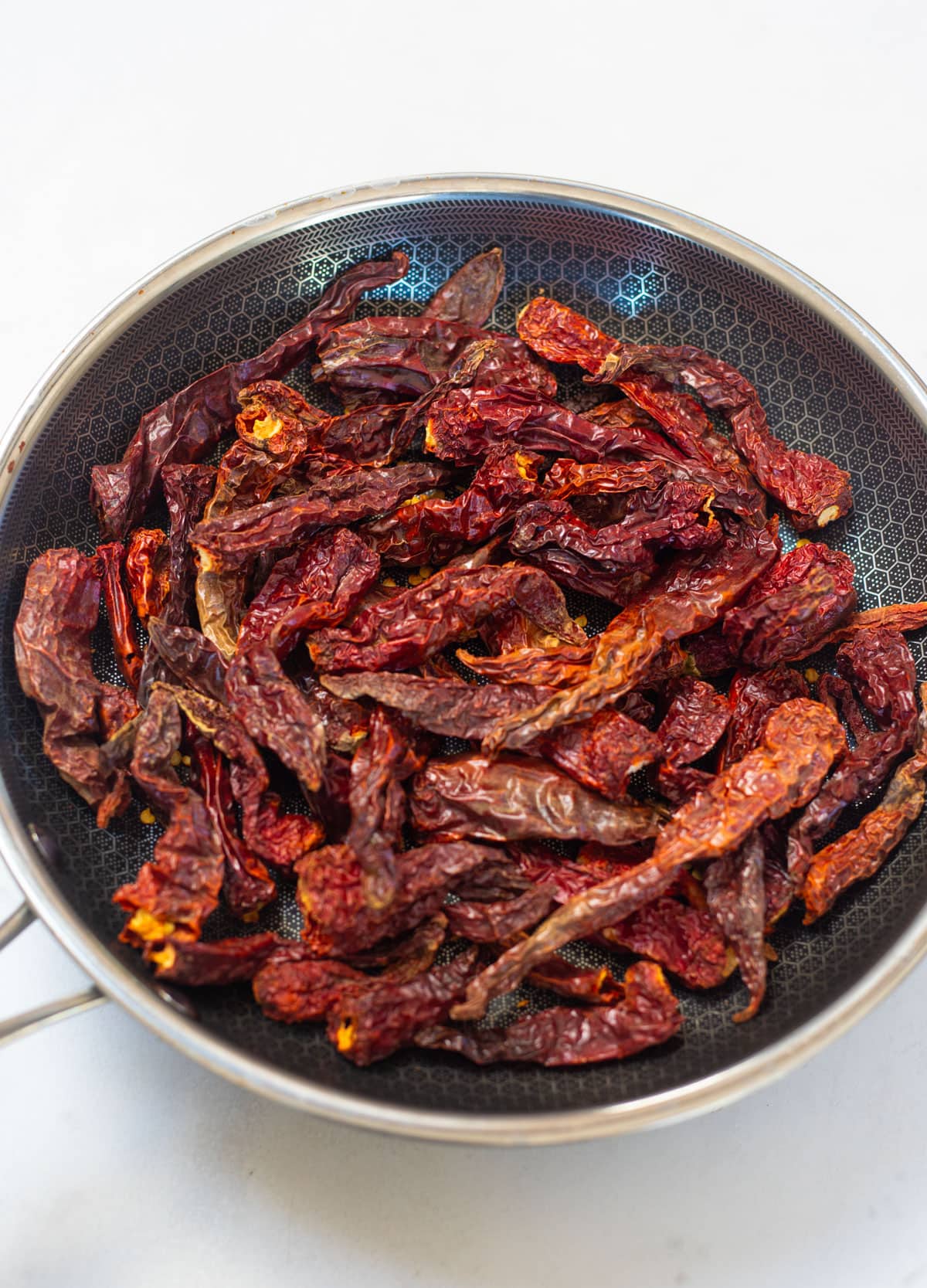
- Let them cool: Take the chilies off the heat and let them cool down completely.
- Grind them: Once cool, put them in a spice grinder until they become a fine powder.
- Cool and store: You can spread the powder on a tray and let it cool completely. Then, put it in a clean, dry container with a tight lid. If you want it smoother, you can sift it through a strainer before storing it.
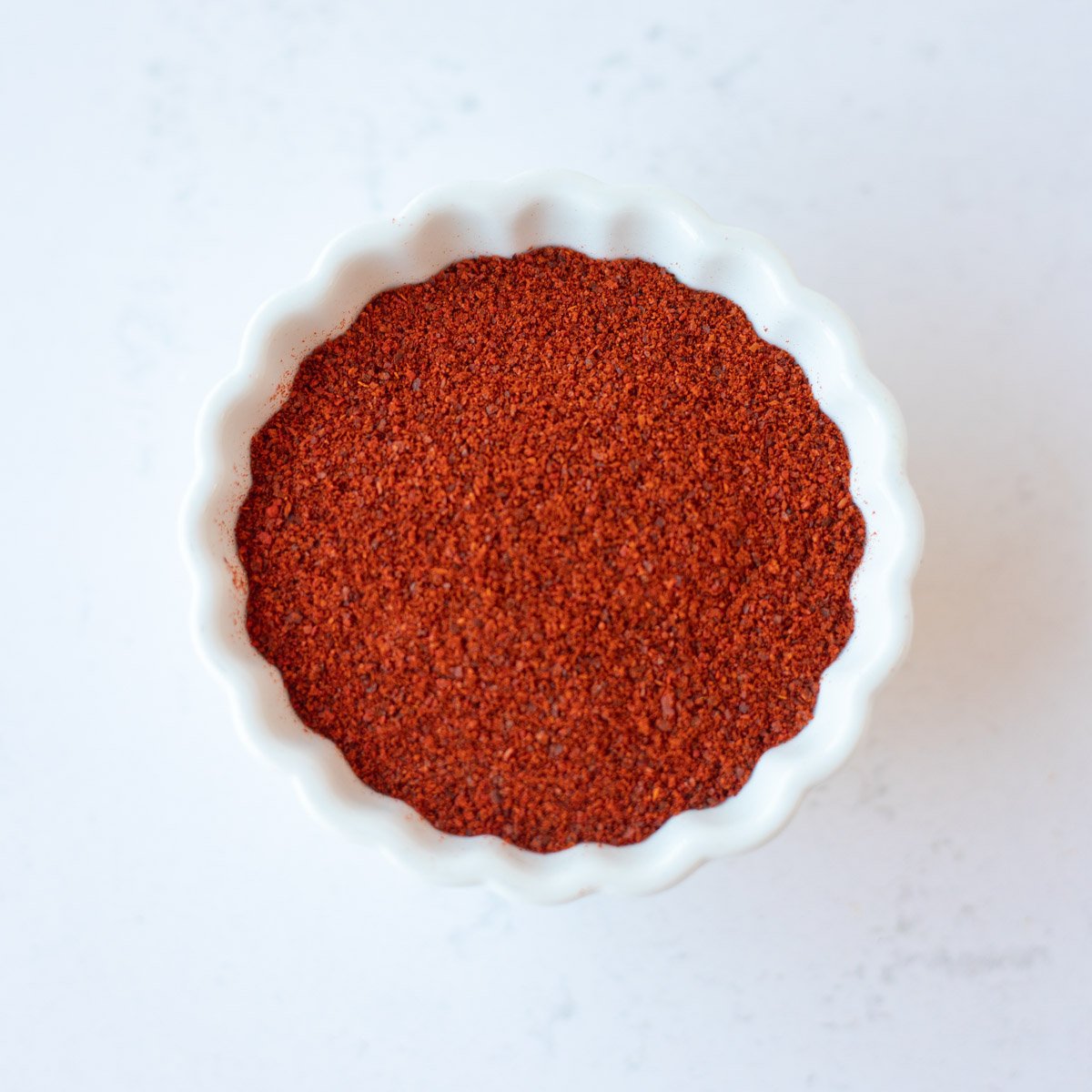
Recipe Tips
Here are some tips I have learned from my mom for making red chili powder at home:
Choose fresh chilies: Pick colorful red chilies without mold or spots.
Remove seeds for mildness: If you want the powder to be less spicy, remove the seeds and inner parts of the chilies.
Roast carefully: Cook the chilies in a pan until they’re crisp and smell good, but don’t burn them.
Let them cool: Make sure the roasted chilies are completely cool before grinding them.
Grind in small batches: Grind a few chilies at a time to ensure a smooth powder.
How to Store?
Use a Clean Container: Put the red chili powder in a clean, dry container with a tight lid. Make sure the container is completely dry before adding the powder.
Keep it Dry: Store the container in a cool, dry place like a pantry or cupboard. Avoid storing it near the stove or any other heat source.
Use a Dry Spoon: Always use a clean, dry spoon when removing chili powder from the container. This helps prevent moisture from getting into the powder.
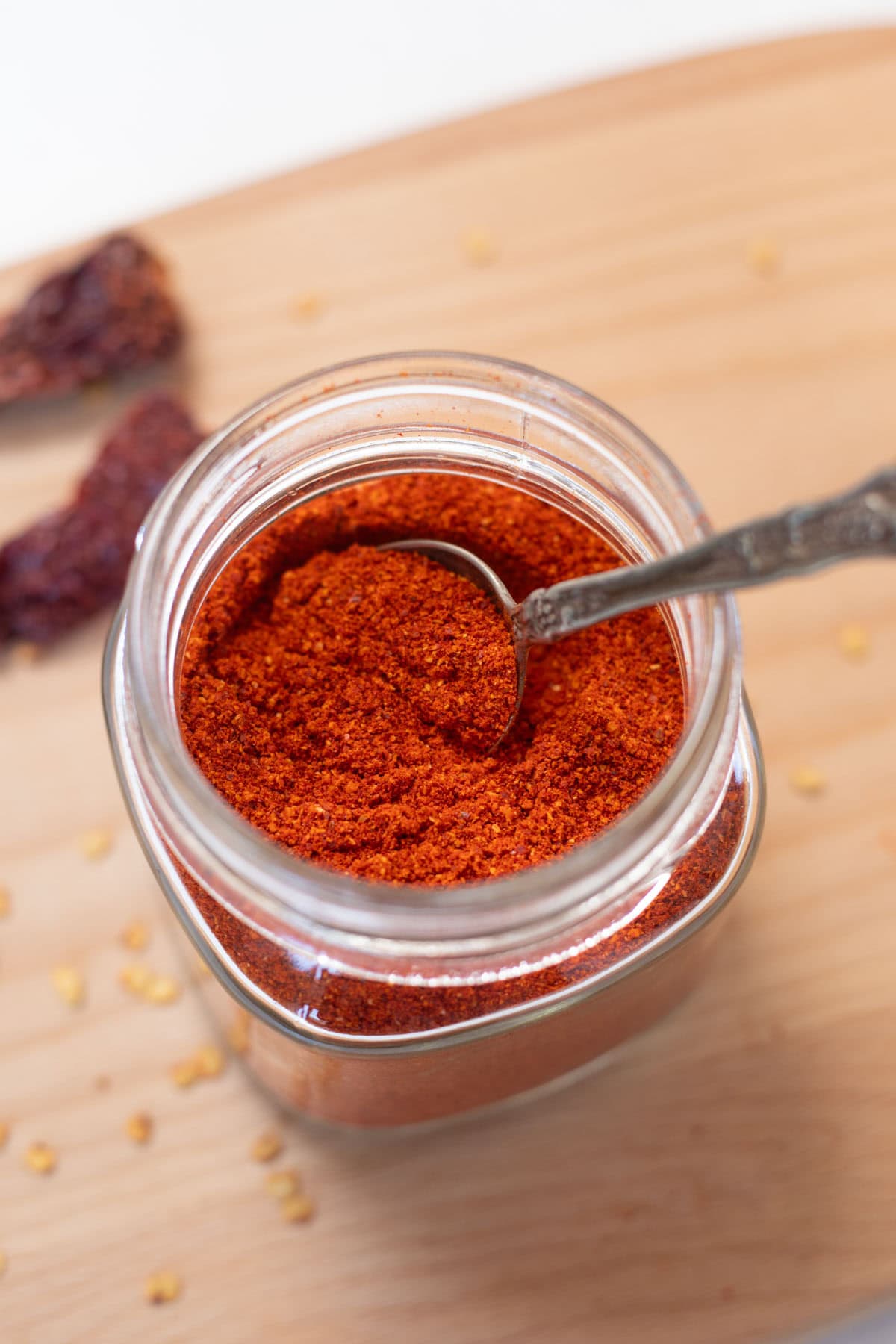
Common Questions
Paprika and red chili powder are different. Paprika is made from sweet red peppers and has a mild, sweet flavor. Red chili powder is made from spicy red chili peppers and has a strong, spicy flavor. Paprika adds color and mild flavor to dishes, while red chili powder adds spice and heat.
If you don’t have Indian red chili powder, you can use cayenne pepper, crushed red pepper flakes, or paprika instead. They’re all a bit different in how spicy they are and what they taste like. Cayenne pepper is the spiciest, crushed red pepper flakes are a little less spicy, and paprika is the mildest and has a smoky flavor. Find more details for Kashmiri red chili powder substitutes.
When cooking, start with less red chili powder and then add more to taste. If a dish you have already cooked is too spicy, balancing the spiciness with other ingredients can help moderate the heat. For example, adding more sweetness (like sugar or honey), acidity (like lemon juice or vinegar), or creaminess (like yogurt, cream, or coconut milk) can help mellow out the spiciness of the dish.
Popular Indian Recipes
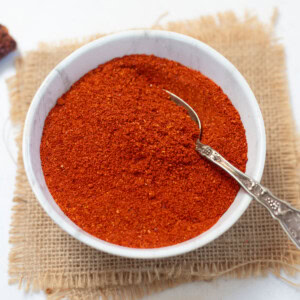
Indian Red Chili Powder
Equipment
Video
Ingredients
- 1/2 pound Red chili , use the variety of chili you prefer (Kashmiri, Byadki, etc)
Instructions
- Pluck the stem from the dried red chilies.
- To a pan or kadai, add the red chili and dry roast until crisp. Remove in a large plate and set aside. To check if roasted, break a red chili. It should easily break and not bend. If it bends, roast for a few more minutes.
- Let them cool down completely. Then transfer to a spice grinder and grind in small batches. Grind it as fine as possible.
- Spread it on a tray, cool it down, and store it in a clean, dry, airtight container. If you feel it's very coarse, sieve it and store it.
